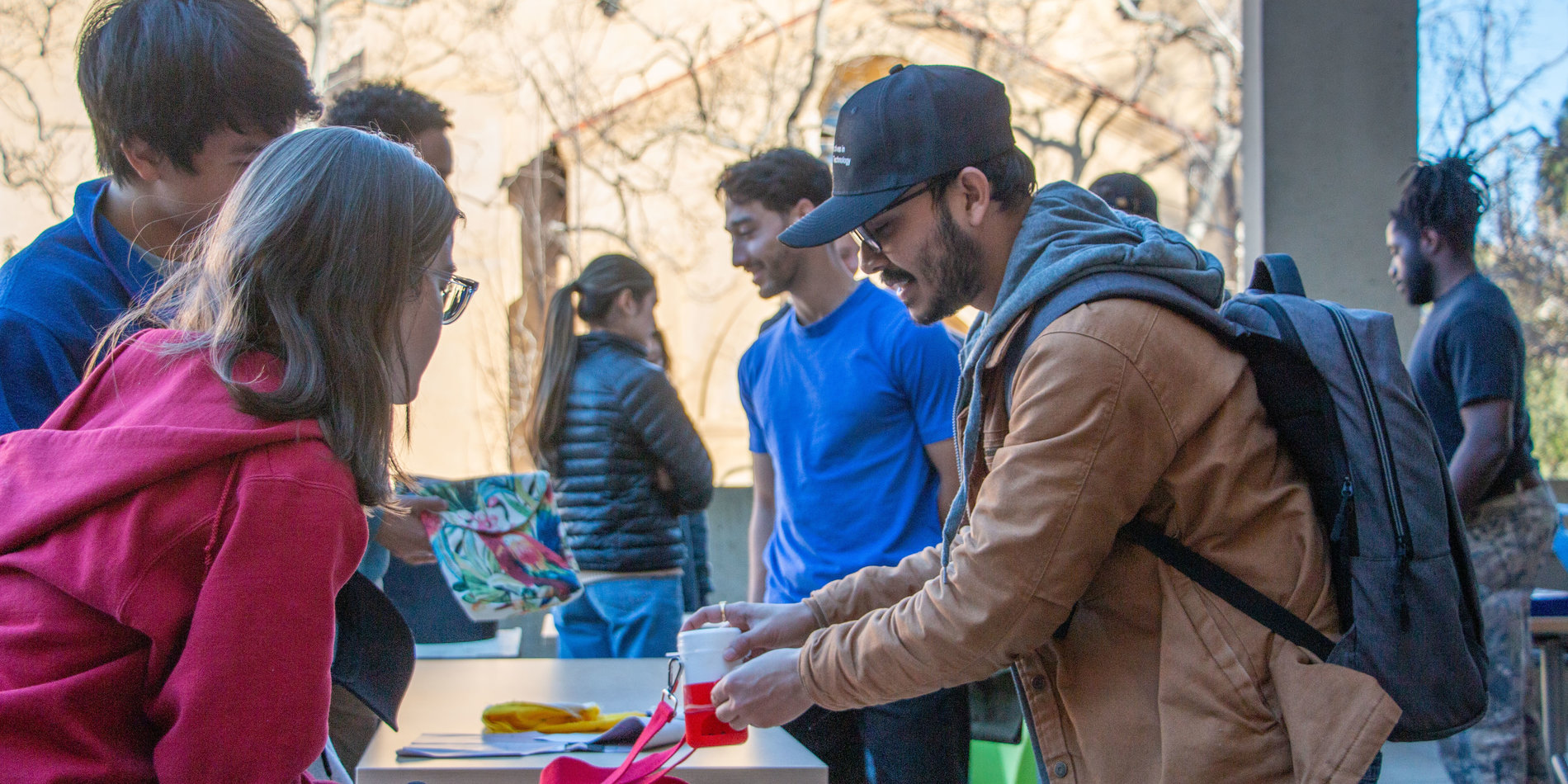Living and serving in community

For the past 13 years, Stanford’s Haas Center for Public Service and Residential Education have partnered to create a living-learning environment dedicated to public service. Branner Hall was its home from 2009 to 2021. This past year marked a transition of the public service theme dorm to Otero Hall. Students have the opportunity to navigate communal spaces, share meals, and talk late into the night about current issues.
While the service theme’s move to a new dorm was a significant change, the residential community has consistently embraced growth and transformation. The history of Branner Hall has been one of constant evolution and innovation, with the objective to build a vibrant community that centered public service.

Thomas Schnaubelt, who with his wife, Mary Esther, has served as a resident fellow at Branner Hall since 2010, sees community as an essential ingredient for public service.
“People find meaning and purpose in public service and civic engagement,” he reflected, “But they do that through the relationships they form.”
Creating a space where a community can thrive has not happened overnight. It has required a willingness to change and adapt, discovering approaches that encourage residents to develop strong bonds.
About 15 students participated in the first two cohorts, consisting of service scholars and theme associates. Service scholars pre-assign to the dorm with an interest in contributing to and learning about public service. Theme associates take more active roles as staff members, working with the resident fellows to develop the program, which has included retreats to build community, service field trips, and community conversations.
For their initial year, the difficulty of having a small group of residents was compounded by the fact that these students were spread across the dorm. The lack of proximity made building community a challenge, so one of the first important changes was to have all theme students live in one area of the dorm.
Another obstacle was the separation that formed between theme students and the rest of the dorm. Structural modifications, such as embedding responsibility for the service theme as a distinctive role for all Branner Hall resident advisors (RAs) and inviting all residents to theme activities, were important shifts for bringing residents together.
This sense of community had tangible effects for students like Timothy Huang, ’14, who was a student staff member at the dorm during his senior year.
“Everyone has a unique perspective that they bring to public service,” he said. “Being able to live in community and serve together helped me to open my mind and heart to the complexity of the world and how valuable that is.”
The program grew quickly from its initial size of 15 residents. While it was capped at 56 residents each year, the number of applications was routinely twice that amount.

Throughout the years, Schnaubelt says that student-led changes have had the greatest impact on the direction of the public service theme dorm. In Branner Hall’s earliest years, student Jessica Pham, ’12, suggested creating a field trip, which soon became an annual programmatic feature. Huang and fellow resident Thazin, ’15, suggested incorporating the Pathways of Public Service and Civic Engagement so that students could explore the different dimensions in a meaningful way.
Thazin was a service scholar during her sophomore year and took a leadership role as a theme associate her junior year.
Thazin remembers how, as a theme associate, there was a sense of agency in shaping the year’s program and implementing fresh ideas. She felt empowered by Mary Esther and Tom Schnaubelt to bring ideas to the table.
One of her favorite memories was during one of the signature trips, where they traveled to San Francisco and residents were able to join different service opportunities.
“This was a great way for scholars to see what it looks like for people to dedicate their lives to service in various forms,” Thazin said. “The discussions changed their minds about how things worked and inspired them to consider careers in nonprofits.”
As the public service theme has moved to the Otero dorm in 2021-22, it has carried that same spirit of building relationships and embracing transformation.
The transition has provided new opportunities to broaden its scope. Branner Hall attracted primarily sophomores to the public service theme. As a four-class house, Otero welcomes students in all class years, with first-year students making up nearly half of the residents.

In Otero’s first year, the structure largely remained the same, with all residents required to make a commitment to sustained public service through the Cardinal Commitment program, one of the four elements of Cardinal Service. Residents also continued to participate in RA-led small groups to reflect on their service experiences and explore each of the Pathways of Public Service and Civic Engagement.
In Otero’s first year, the structure largely remained the same, with all residents required to make a commitment to sustained public service through the Cardinal Commitment program, one of the four elements of Cardinal Service. Residents also continued to participate in RA-led small groups to reflect on their service experiences and explore each of the Pathways of Public Service and Civic Engagement.
Next year residents will be able to choose from three program tracks that will organize public service activities according to students’ interest and experience: Explore, Engage, and Lead.
The Explore track will be designed for students new to Stanford or to public service and will introduce them to public service frameworks and approaches. The Engage track will support students who are prepared to make a service commitment during their year in residence, providing a space for reflection and learning. The Lead track will guide those residents in leadership positions in the house, at the Haas Center, or in one of the more than 100 student service organizations, helping them reflect on and deepen their leadership skills.
As the public service dorm continues to grow, meeting students’ evolving needs, interests, and goals will be at the heart of those changes. Timothy Huang remembers how intentional each of the program decisions was to engage students and get them out of their comfort zones.
“The resident fellows enabled us to own the program and build on it from our own experiences as service scholars,” he said, noting that he believes that the student-led nature of the public service dorm is what allows it to continue to be a vibrant community.



